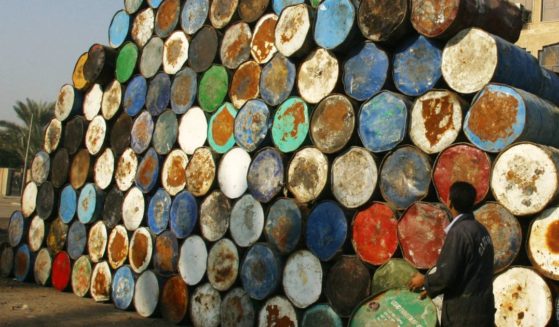Discovery Reveals Earth Began Forming Much Earlier Than Scientists Thought
<img src=”https://storage.googleapis.com/prod-zenger-storage/image/20221115/feat_3503dc79-3f39-4979-ba05-12f98799691a.jpg” alt=”File – The Crew Of Apollo 17 Took This Photograph Of Earth In December 1972 While The Spacecraft Was Traveling Between The Earth And The Moon.
(Photo By Nasa/Getty Images)”>
Earth began forming much earlier than previously thought – at the same time as the sun, according to new research.
Building blocks of planets come together while their host star is growing – rather than once it has reached its final size.
The discovery sheds light on how the solar system came about. It happened more than 4.5 billion years ago – but the order of events is a mystery.

First author Dr. Amy Bonsor, of Cambridge’s Institute of Astronomy, said: “We have a pretty good idea of how planets form.
“But one outstanding question we’ve had is when they form. Does planet formation start early, when the parent star is still growing, or millions of years later?”
To answer the question, a British-led team studied the atmospheres of white dwarfs – ancient, faint remnants of stars like our sun.
Dr. Bonsor explained: “Some are amazing laboratories because their thin atmospheres are almost like celestial graveyards.”
The interiors of planets are out of reach of telescopes. But a special class of white dwarfs – known as ‘polluted’ systems – have heavy elements in their atmospheres.
The magnesium, iron, and calcium came from small bodies like asteroids left over from planet formation.
They crashed into the dying stars and burned up in their normally clean atmospheres. As a result, spectroscopic observations can probe the contents of smashed asteroids.
It provides direct insight into the conditions under which they formed. Planets begin as a disc of hydrogen, helium, ice, and dust orbiting a young star.
The solid particles stick to each other – getting bigger and bigger in the process. Some will continue to accrete, becoming planets.
Others remain as asteroids. The researchers analyzed spectroscopic observations from the atmospheres of 200 polluted white dwarfs from nearby galaxies.
The mixture of elements can only be explained if many of the original asteroids had once melted.
This caused heavy iron to sink to the core while lighter elements floated on the surface. Known as differentiation, it caused the Earth to have an iron-rich core.

Dr. Bonsor said: “The cause of the melting can only be attributed to very short-lived radioactive elements, which existed in the earliest stages of the planetary system but decayed away in just a million years.
“In other words, if these asteroids were melted by something that only exists for a very brief time at the dawn of the planetary system, then the process of planet formation must kick off very quickly.”
The study in Nature Astronomy suggests gas giants Jupiter and Saturn had plenty of time to grow to their current sizes.
Dr. Bonsor said: “Our study complements a growing consensus in the field that planet formation got going early, with the first bodies forming concurrently with the star.
“Analyses of polluted white dwarfs tell us that this radioactive melting process is a potentially ubiquitous mechanism affecting the formation of all extrasolar planets.
“This is just the beginning – every time we find a new white dwarf, we can gather more evidence and learn more about how planets form.
“We can trace elements like nickel and chromium and say how big an asteroid must have been when it formed its iron core. It’s amazing we’re able to probe processes like this in exoplanetary systems.”
Produced in association with SWNS Talker.
The Western Journal has not reviewed this story prior to publication. Therefore, it may not meet our normal editorial standards. It is provided to our readers as a service from The Western Journal.
Truth and Accuracy
We are committed to truth and accuracy in all of our journalism. Read our editorial standards.












